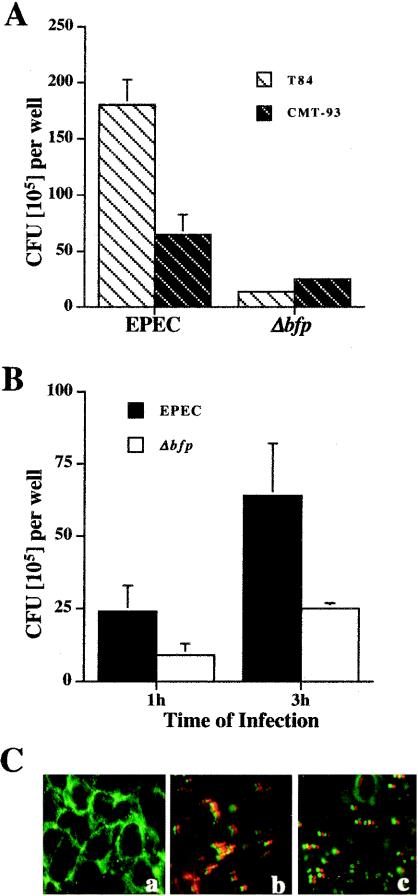FIG. 1.
EPEC adheres to mouse intestinal epithelial cells in vitro. (A) Monolayers of human intestinal T84 cells and mouse intestinal CMT-93 cells were infected for 3 h with wild-type EPEC and a Δbfp mutant. Adherence assays showed that while wild-type EPEC and the Δbfp mutant adhered to both cell lines, the adherence of wild-type EPEC was greater. (B) EPEC adherence to mouse CMT-93 cells progresses during infection. Mouse intestinal CMT-93 cell monolayers were infected for 1 and 3 h with wild-type EPEC and the Δbfp mutant. The adherence of both organisms increased over time, with EPEC adherence being greater than that of the Δbfp mutant. Data in panels A and B represent the mean and standard error of the mean for one of four experiments (n = 4); the P value was <0.05 for all comparisons between T84 and CMT-93 cells as well as between wild-type EPEC and the Δbfp mutant. (C) Immunofluorescence staining of host actin and bacterial LPS in mouse intestinal CMT-93 cell monolayers that were uninfected (a) or infected with wild-type EPEC (b) or Δbfp (c) for 3 h. Wild-type EPEC attached to mouse intestinal epithelial cells as microcolonies, whereas the Δbfp mutant attached as single organisms.

